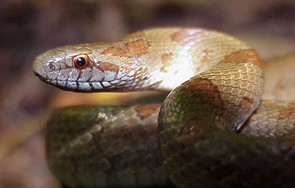
Lampropeltis calligaster
Photo by JD Willson
Description: The mole kingsnake is brown or gray with small reddish or dark brown blotches on its back. In some older individuals, the blotches become so faded that the snake looks uniformly brown. This snake has a row of smaller spots along each side, and its belly is usually whitish or yellow mottled with red, gray, or brown. The mole kingsnake has smooth scales and its head is not very distinct from its neck.
Feeding/Diet: Mole kingsnakes are strong constrictors and feed on lizards, rodents, and other snakes.
Activity/Behavior: Mole kingsnakes can be active during the day or at night but are secretive, spending much of their time underground.
Habitat/Range: These snakes inhabit the Piedmont, Coastal Plain, and some mountain valleys in the extreme western part of the state. They live in old fields, farmlands, thickets, and wooded areas. Occasionally, they can be found in suburban areas under debris.
Reproduction: They mate in late spring and lay 3–13 eggs during the summer. The babies are more boldly marked than the adults.
Miscellaneous: Most individuals are rather docile when handled, but occasionally may bite. Due to their coloration, many mole kingsnakes are mistakenly identified as copperheads and unfortunately killed.

The shaded region represents the range of the mole kingsnake in North Carolina.
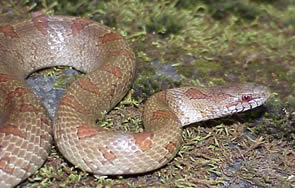
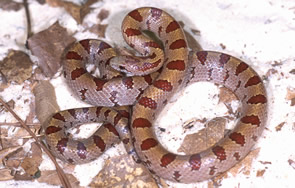
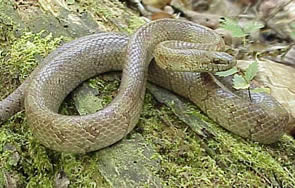
Photo by Eric Stine
Photo by JD Willson

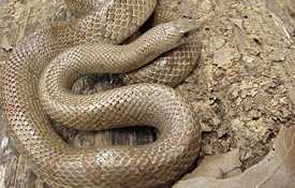

Photo by RW Van Devender
This website created by: J. Willson, Y. Kornilev, W. Anderson, G. Connette and E. Eskew.
For comments or questions contact M. Dorcas: midorcas@davidson.edu.
M. Dorcas homepage: http://bio.davidson.edu/dorcas
Davidson College, Davidson, North Carolina 28035-1719.
Text and maps from: Dorcas, M. E. 2004. A Guide to the Snakes of North Carolina. Davidson College - Herpetology Laboratory, Davidson, NC. – Copyright by Michael E. Dorcas.
Partial Funding for this website provided by a Associate Colleges of the South, National Science Foundation, and Duke Energy.
